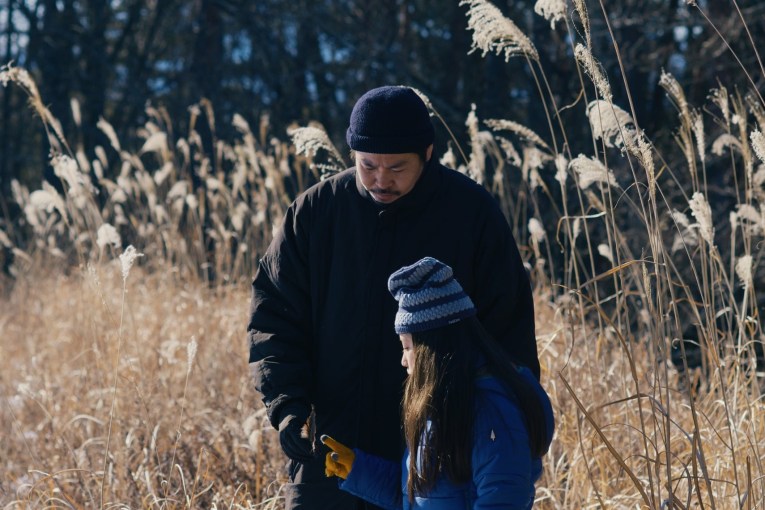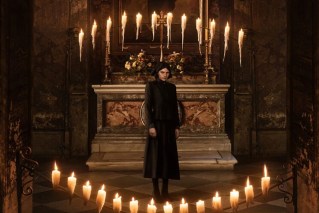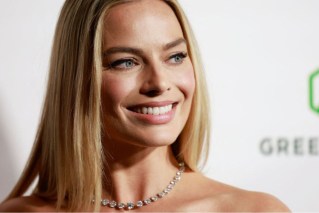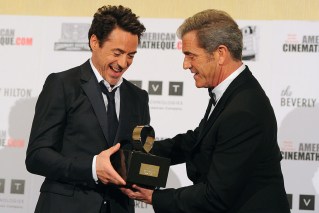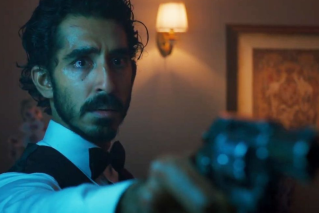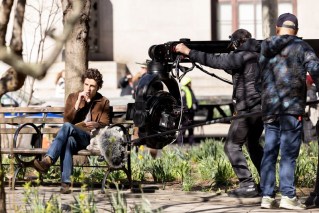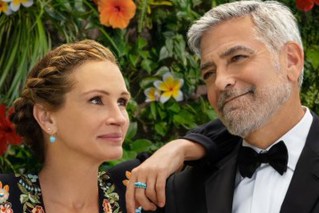Why on-screen mobsters, from The Godfather to The Sopranos, are so obviously Catholic
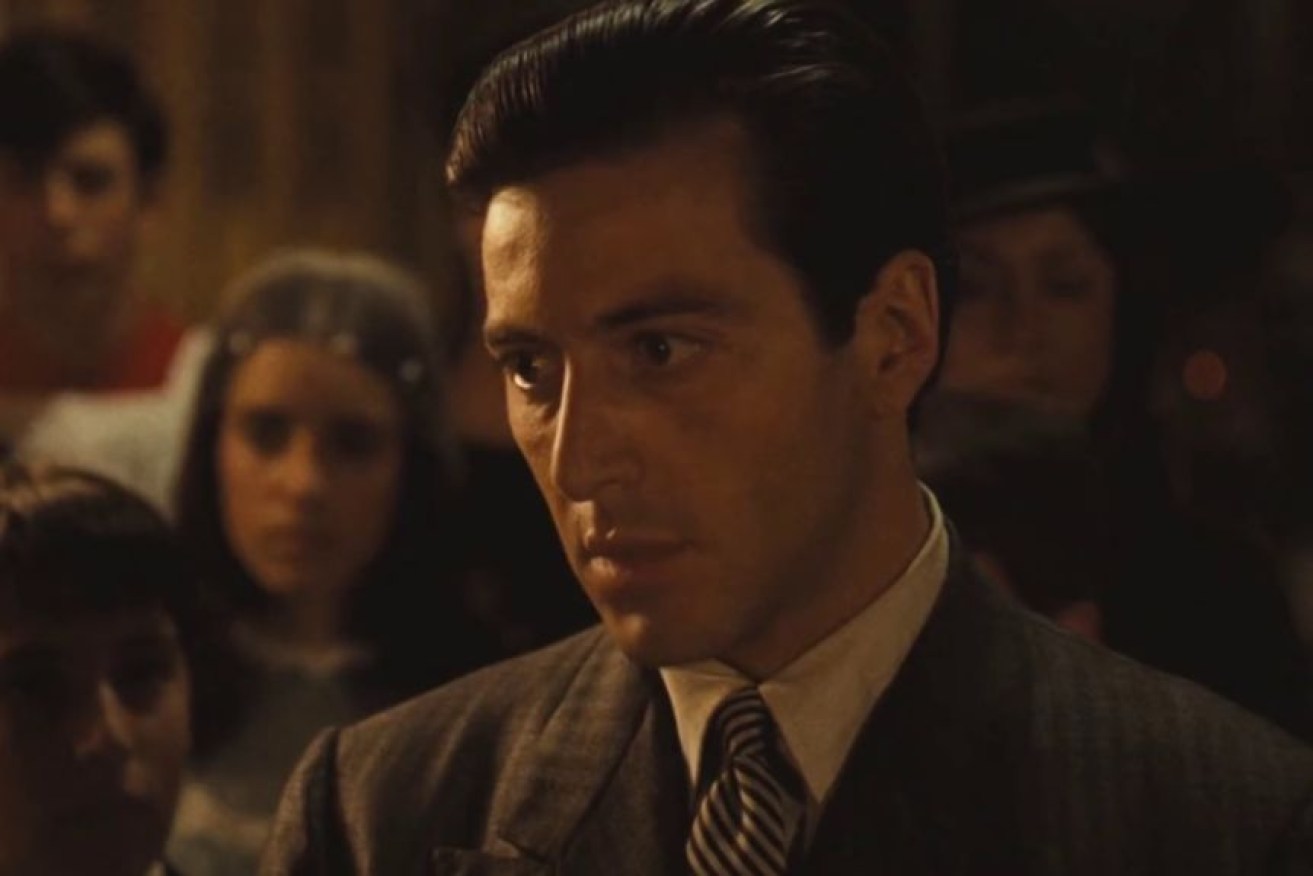
As Michael Corleone renounces Satan during his nephew's baptism, we watch five brutal murders. Photo: Paramount Pictures
From Michael Corleone to Tony Soprano, on-screen mobsters are far more violent than virtuous.
Yet despite dealings in organised crime – and their ability to justify murder as “business” – these men, and their families, identify as Catholics.
Baptisms, confessions and other religious sacraments are strewn throughout The Godfather trilogy and the HBO series The Sopranos.
You might think that religion – like pasta or Italian curse words – is just another tool that screenwriters use to emphasise the mobsters’ migrant backgrounds.
But there’s more to it than that. As one film critic argues, Catholicism was inserted into this violence-laden genre to get movies past American censors in the early 20th century.
Original gangsters versus the censors
Critic and author Martha Nochimson says the story starts in the 1930s with the introduction of the Motion Picture Production Code, commonly known as the Hays Code.
These moral guidelines prohibited films from featuring nudity, drug trafficking, the ridicule of clergy, and other content deemed profane.
“The original Catholicism was really grafted onto the gangster movie by the censors,” she points out.

Catholic-raised film censor Joseph Breen applied the Hays Code to movie production.Photo: Getty
“They said the gangster had to be punished at the end, and there should be some moral spokesperson, preferably a Catholic priest, in the meanwhile.”
The 1938 picture Angels with Dirty Faces typified this morality-based model.
The film depicted the friendship of a hardened felon, played by James Cagney, and a Catholic priest, who sought to stop youths from following a path of crime.
But Dr Nochimson says the code’s attempts to sanitise mobster movies weren’t successful.
“The audiences did not identify at all with the moral spokesperson. They identified – and this is a problem – with the gangsters,” she said.
New York, new Catholicism
James Martin SJ, a Jesuit priest based in New York City, says audiences now expect these kinds of storylines to involve Catholicism.
“Most of the mob movies that people are familiar with – The Godfather, Goodfellas, The Irishman, most recently – are about the Italian mob in the United States, which is largely Catholic,” he said.
“The Italian-American experience was centred around the church for the immigrants in the 1900s, right all the way up to 1950, 1960.
“And by now it’s kind of a trope … I think people expect them to go to church.”
Despite being a fan of The Godfather and The Sopranos, Father Martin points out that fictional depictions of mobsters are often laden with racial stereotypes.
“I think the difficulty for a lot of Italian-Americans, like myself, is the portrayal of, ‘If you’re from Italy you’re from the Mafia,'” he said.

Tony Soprano might not be practising, but he still calls himself a Catholic. Photo: HBO
For example, in the 1940s – the era at the beginning of The Godfather – the traditionally Italian neighbourhoods of New York City enabled first- and second-generation immigrants to “transplant the values of the old world to the new”.
He contrasts this with the late 1990s, when The Sopranos began airing.
“There was a tremendous exodus of Italian-Americans from those neighbourhoods in lower Manhattan, Brooklyn and East Harlem to places like New Jersey,” he said.
“Over time, the Italian-American customs that had been so tightly reinforced by the life of these close-knit neighbourhoods, they all kind of dissolve.”
The sexualised sacrament
While Tony Soprano may be a less observant Catholic than Michael Corleone – at least in terms of church attendance – religious rituals, figures and structures are still omnipresent in The Sopranos.
The children are sent to Catholic schools, the Virgin Mother is regularly invoked with cries of “Madone!” (Madonna), and when men are “made” (or inducted into the mobster family), they say their oath before a card of St Paul.
“They haven’t thrown away all the [Catholic] structure, but the structure is empty,” explains Dr Nochimson.
She says Carmela Soprano, Tony’s wife, has a particularly interesting relationship with religion.
Throughout the show, Carmela wrestles with the knowledge that she’s an accessory to organised crime and her desire to renounce evil. When times are bad, she prays and goes to confession.
But despite being a married woman, she also has a “thing” for the local priest and, in a heated scene during the first season, shares a spiritual-meets-sexual encounter with the much younger Father Intintola.

Carmela Soprano has a flirtatious and morally fraught relationship with Father Intintola. Photo: HBO
“Allen Coulter directed this episode and he told me … he directed it like a parody of a porn movie,” Dr Nochimson said.
In the scene, Father Intintola gives Carmela communion in front of a blazing fire. We see an extreme close-up of her tongue and lips as she takes the holy wafer and wine.
“What she does in this episode is what she does with Catholicism all the way through,” says Dr Nochimson.
“She uses it as a bridge to satisfying wants and desires that, in the Christian faith and in all major faiths, have been classified as sin.”
Repenting from sin
Carmela Soprano’s storyline isn’t the only one where sacred rites clash with selfish and sinful objectives.
One of the most iconic scenes from The Godfather splices Michael Corleone at the baptism of his nephew – promising to be a good Catholic, renouncing Satan – with the brutal murders of the five mobster family heads.
For Father Martin, it’s an image that’s difficult to get out of his head even in deeply sacred moments.
“Every time I do a baptism, and I say, ‘Do you reject Satan?’ … I’m focused on the baptism, but I think about that scene, because I saw that scene long before I was a priest,” he says, laughing.
“It’s a marvellous bit of filmmaking … it’s life versus death, water and blood, so there’s a lot of heavy symbolism there.”
Father Martin has another perspective on mobster films, having actually played a role in one – appearing as a priest in Martin Scorsese’s The Irishman.

Director Martin Scorsese asked James Martin to act as a priest in the The Irishman. Photo: Netflix
The 2019 film chronicles the life of an Irish truck driver-turned-hitman (Frank Sheeran, played by Robert De Niro) who works for an Italian mobster.
And Father Martin says it’s a movie that deals with Catholicism in a more sophisticated way.
“I think there is a sense of repentance, remorse and regret that I didn’t see in some of the other films,” he says.
“I mean, Michael Corleone doesn’t ever seem to be upset about what he’s doing. It’s just business.
“At the end of The Irishman, no one wants to be Robert De Niro’s character – he’s alone, his family has rejected him, he’s sick, everyone’s dead. It’s not glamorising these people at all.”
–ABC
